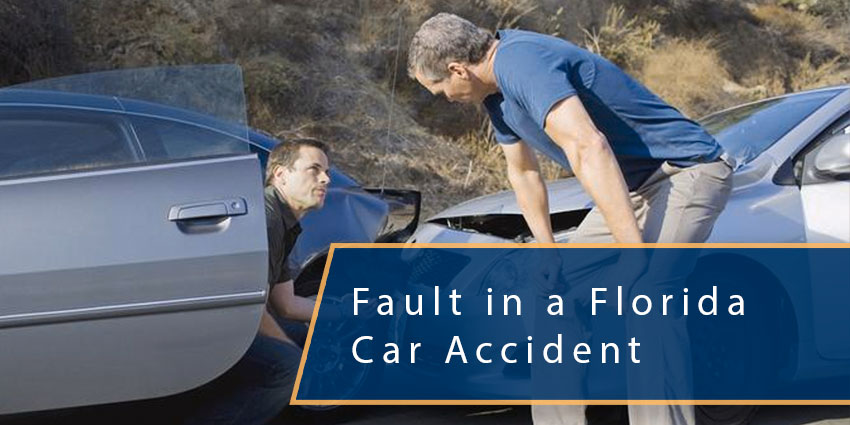Understanding how fault is determined after a car accident is one of the most common requests that we receive from our clients. Everyone asks about Florida being a no-fault state, but not many people really understand what that means when it comes to car accidents.
Every person operating a motor vehicle on Florida’s roads has an obligation to do so in a safe manner so as not to cause harm or injury to others. This is referred to as a “duty of care.” Duty of care is one of the four things that we will look at in this article on how fault is determined after a car accident.
Table of Contents
How Can A Driver Be At-Fault in a No-Fault State?
Excellent question! You probably already know that Florida is considered to be a “No Fault” state. This means that each driver involved in an accident must first file a claim under their personal injury protection policy (PIP) with their insurance company – regardless of fault or liability.
Remember, PIP does not put money in your pocket. It is used to pay up to $10,000 in medical bills and lost wages. The payments for medical bills goes to the doctors, not you. The way that you recover money is through the at-fault driver’s insurance or through your own uninsured motorist coverage. In summary, Florida being a no-fault state is a misleading term because it has nothing to do with how your car accident lawyer can recover money for you.
What Factors Are Considered to Determine Fault?
Duty of care: As mentioned above, every driver has an obligation to operate a vehicle in a safe manner so as to not cause harm or injury to another person. When determining liability, there must be a duty of care.
Breach of duty: There must also be evidence that the driver failed to meet their duty of care. This breach of duty may be either done through negligence or intentional.
Causation: In order for a driver to be found at-fault for an accident, there must be evidence that the breach of duty caused the accident to occur. And,
Damages: There must also be evidence that the accident resulted in losses and expenses.
While this may sound simple enough, proving these four elements can be challenging sometimes. This is just one of the reasons we recommend speaking with a knowledgeable personal injury attorney after any serious car accident. They can help establish the at-fault party’s duty of care, demonstrate how their actions led to the accident, and pursue compensation for the injured party’s resulting damages.
What Evidence Helps to Determine Fault?
Evidence is needed to show that the other driver was at-fault for the accident. Here are some of the most common forms of evidence used to demonstrate liability.
Police reports are probably the most common piece of evidence used to determine liability, it contains all the details about the accident, including who the responding officers believe to be at fault given their appraisal of the scene. This is why reviewing the accident report carefully is so important, and any discrepancies addressed immediately.
Witness statements are generally included in the police report. These also should be reviewed to understand if witnesses saw something contrary to how you recall the accident occurring.
Photo or video evidence from the scene of the accident can be especially helpful in determining liability. A picture is worth a thousand words. Having photos or video evidence can provide insight into how the crash occurred.
What if Both Drivers Were Negligent?
Many car accident cases tend to have small details or nuances that make determining who was at-fault more challenging. Speaking with an experienced personal injury attorney can help you understand how fault was determined in your specific situation.
In Florida, any compensation that you may be awarded can be reduced by the percentage that you contributed to causing the accident. Let us look at the following scenario:
Bob’s car was hit by another driver who was speeding and failed to yield to oncoming traffic at a traffic light. The other driver made a right hand turn, even though he did not have the right-of-way. He struck Bob’s car and caused serious injuries which resulted in $50,000 in medical costs.
But Bob was sending a text message when the accident occurred, and it was determined that Bob was 40% responsible for the accident. As a result, Bob would only collect $30,000 in compensation, rather than the entire $50,000.
This is referred to as comparative negligence. The comparative negligence principle, simply put, means that the award for damages may be reduced based on their portion of fault that contributed to their injury.
Understanding Florida’s motor vehicle laws, negligence, legal liability, and how an insurance company will apply its coverage policies to your situation can be complicated and time-consuming, and mistakes can be financially devastating.
CONTACT A PERSONAL INJURY ATTORNEY
If you or a loved one has been injured in a car accident, then you should take the appropriate steps to ensure you receive the compensation you deserve. Contact a trusted, respectable personal injury attorney today.














